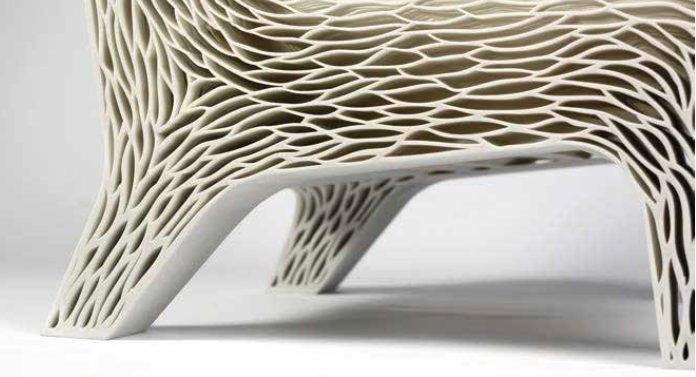[pullquote]Models, prototypes and digital production broaden horizons for designers, architects, producers and craftspeople, by Giancarlo Magnaghi[/pullquote]
The phenomenon of 3D printing is reaching so-called “critical mass” and it’s conceivable that designers and architects – who since the 1980s have abandoned drafting tables for workstations for 2D and 3D design – will soon be tempted to abandon balsa, cardboard and polystyrene when constructing prototypes and switch to the immediacy of 3D printing.
3D techniques are powerful instruments in the service the designers’ innovations and can be seen as an opportunity to dedicate to more time to the invention process, experimenting with a greater number of solutions thanks to the speed and efficiency of the prototyping process. Moreover, with 3D printing it is possible to construct objects that are impossible to produce with any other technique, thus opening new horizons for studying unprecedented formal content.
If, until recently the techniques used in design, prototyping and digital manufacturing were reserved for large manufacturing concerns, because of the substantial investments as well as the technical expertise that were necessary; today, cost reductions and process simplifications have made these technologies accessible to professional offices, small businesses and craftspeople.
Those who will benefit most from the development of these digital technologies are designers who will be able to transform a product design into a three-dimensional prototype.
Also in the educational field, new skills will be necessary in order to transfer technical and business facets to a design targeted at 3D printing technology. The educational system is adapting in order to train professionals who are “Digital Native”: the principal design academies and many technical and professional institutes teach proficiency with CAD and are equipped with FabLabs where students can have practical experience with the new digital production techniques and gain the necessary skills to become “makers”; meanwhile a growing number of designers have begun to explore and use the possibilities offered by digital technologies.
According to Matteo Vettori, CEO and co-founder of e‑FEM, an engineering company specialized in providing specialized simulation services, which has considerable experience in the furniture industry working with companies such as Kristalia, Artemide, B&B, Poltrona Frau and Walter Knoll: “Today 3D design is not only for automobiles or industrial machinery, but also for any type of consumer product, from household appliances, to kitchen containers, to apparel, from designer chairs or furniture to water bottles.
Today the simulation market, which is the virtual prototyping market for objects, is experiencing the same development curve, but steeper due to the development of the PC. These tools allow an objects’ performance to be verified before it’s produced; notonly aesthetic and functional evaluations, but through the reinterpretation of the simulation information, today it’s also possible to evaluate the comfort of seating, or rather its climatic well-being inside a building or in a public square.
Driven by a great deal of positive media, today we find ourselves right in the middle of an explosive expansion in the digital manufacturing market, in3D printing, technologies which have made possible not only the development and eventually the digital simulation of products, but also their construction with partial or complete functionality, without all of those investments in equipment, preproduction, etc. that are typical of traditional manufacturing.”
(Excerpted from the Review Officelayout — Soiel International Copyright 2014©)
